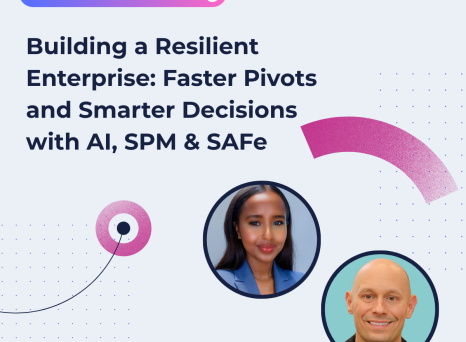You might think becoming Agile means overhauling the way you work. But if you look at the tools and methods you use in your business, you'll likely find that you're already deploying Agile principles. This is especially true if you work in ways that enable flexibility and enhance productivity.
So, if you want to implement Agile in your company, we've come up with 5 telling signs that you're already halfway there. Rather than starting from scratch, you can use these to target your efforts to build on existing success.
1. You Take an Iterative Approach
Do you A/B test your projects? Does your business run a website that allows for gradual integrations? These are examples of taking an iterative approach.
Agile is also apparent in marketing when teams test, learn and improve in cycles. For example, split testing email workflows or trying new post lengths on social media platforms.
With an iterative approach, you deliver work through sprints, testing at each stage and implementing changes as you go. This enables you to tackle issues as they arise. It also gives you greater control over your projects.
2. You Work in Self-Organized Teams
Small, independent teams are the lifeblood of the agile organization. Top executives can unleash them by driving ambition, removing red tape, and helping managers adjust to the new norms.
- McKinsey
Employees in Agile teams are more accountable and empowered, meaning they're more likely to produce better work while having a stronger sense of ownership.
In addition, self-organized teams deliver faster. This is because they're not working in silos dependent on someone completing one task before another can begin.
They're also able to deliver faster because they can organize themselves in the way they want. This approach directs stakeholders to focus on output rather than process, so teams don't have to waste time explaining how they need to work-they can just get on and do it.
3. You Put the Customer First
Let's take a look at the first principle of the "Agile Manifesto":
Our highest priority is to satisfy the customer through early and continuous delivery of valuable software.
What does this look like in practice?
Well, the Agile approach means breaking a large project down into smaller tasks. These tasks should be ones you can complete in short sprints. You can then deliver testable, viable products, features or milestones rapidly and regularly to the customer. This is as opposed to the Waterfall approach, where you complete the full project before delivery.
But to ensure that the customer is satisfied with your work, regular communication is also key. This brings us to the next step.
4. You Hold Regular Check-ins
When you check in with your customers regularly, you get feedback on each small task. This lets you implement change more easily, more quickly and with less impact on the wider project.
But regular check-ins aren't just for customers-they're equally crucial to internal communication.
Daily standups allow teams to share issues and receive useful feedback, helping management remove blockers and mitigate risks. Regular retrospective meetings also give teams the opportunity to reflect on their past work and apply learnings to their next project.
5. You Use Kanban Boards
Kanban is a visual system that helps you improve visibility and manage your projects more effectively. It uses cards to represent work items, which you then move along the Kanban board as you progress and complete each task. This gives teams and stakeholders an instant overview of their project at any given time.
But, while some project managers purposefully set up Kanban boards, many people use them without even realizing it. Over one million teams worldwide use Trello, for instance, to enhance workplace productivity. And this is just one of many web-based Kanban applications.
So, the question is: are you halfway to Agile, but didn't know? And if you are, why stop there?
Take the Next Steps Towards Agile
If these signs look familiar, you've made good progress towards Agile. And now you've put a label to your efforts you can start to formalise and improve how you do each of them. You can also start to adopt more useful Agile principles.
One great way to boost what you're already doing is to streamline the tools you use. It's common for companies to have a plethora of subscriptions to platforms that help you collaborate, plan and communicate. Switching between them and trying to pass information between them is definitely not in the spirit of transparency and communication that lies at the heart of Agile.
Look to consolidate your tools into a single project management platform. Planisware Orchestra, for example, integrates Kanban boards, sprint assignments and project roadmaps so that you can keep your Agile actives all in one place.


